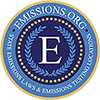Last updated on March 21st, 2018
Recent reports suggest that the EU will soon be adopting tougher standards on vehicle emissions. They will also update their testing rules. The aim is to get results which will be closer to realistic driving conditions. The new standards will come into play in 2016. First of all, however, they will need to be improved by Frans Timmermans. He holds the position of vice president of the European Commission.
The current standards are the New European Drive Cycle protocol or NEDC. This has been criticized as unrealistic and optimistic. It seems that this is having a large effect. The testing process of the Environmental Protection Agency in the US uses their own protocol. They report fuel economy numbers on European cars as much lower than the NEDC does.
Car manufacturers are not pleased with the suggested changes. They are already able to game the system in a way that is beneficial to them. There have been reports that some manufacturers are trying to stop the changes altogether. It is believed that this is one of the reasons why it will take so long to go into force. In the public eye, they claim that they need more time to change their processes. When the standards come into force, cars will need to have lower emissions overall. Whether they find a new way to play the system or not will likely not change that.
Currently, it is thought that a number of tricks are employed to play the figures. For example, windows and doors can be taped up to lower the amount of air resistance. Fake roads which are far too smooth compared to the real thing are used. High air temperatures, which are unlikely in real situations can also be employed. Some cars even have a low emission mode, which is triggered when the front wheels only are spinning. This is because the back wheels are normally stationary when the tests are being conducted.
Research suggests that the real emissions figures are on average seven times higher than the standard. Some models may even be running at twenty-two times that. Only one car out of sixteen looked at by the Council on Clean Transportation met the limit. This is 80 mg/km of nitrogen oxide emissions. This is obviously not great for our battle against pollution.
There is some hope that the push towards greener cars and vehicles will help in this area. If the vehicles on the roads are electric or hybrid, the standards will not be abused as much. In the meantime, there are still plenty of old cars on the roads. Until these more harmful models are retired, pollution will continue to be a big issue. We can expect to hear more about the plans to tackle this by September. Then we will understand the changes to the regulations as well. This gives more than enough time for manufacturers to state their arguments. When the final legalization goes through, however, they will be forced to comply.

No comment yet, add your voice below!